Like Charles Dickens’ famous opening line, “it was the best of times, it was the worst of times.” Flying in 2018 is the worst it has ever been, from poor customer service to Basic Economy, being nickel and damned to the elimination of first class cabins. There is a lot to lament about flying in 2018, here is why it’s never been worse.
If you are considering booking travel or signing up for a new credit card please click here. Both support LiveAndLetsFly.com.
If you haven’t followed us on Facebook or Instagram, add us today.
Customer Service Deterioration
Last year was the year of Dr. Dao, and while it was widely thought that it couldn’t get any worse than physically dragging a bloodied, screaming passenger out of a seat he rightfully purchased, I fear we are not on a path for improvement. Flight Attendants have discovered a seemingly endless power if only they claim a security issue or difficulty with a customer they need not confront, face or deal with the passenger but rather expel them from the jet entirely.
Some FAs may comment and disagree with this, but I could include account after passenger account of Flight Attendants who have decided that something was a security risk that truly is not, one of which is when our own Matthew Klint was kicked off a flight to Istanbul for taking a photo (proved well within his rights and United’s own policies). Why bring an incident from 2013 up in an article about the future being even worse than the past? Because it continues to happen and airlines continue to fail to learn the lessons of past mistakes.
More importantly, there are virtually no signs of airline customer service improving. At Spirit, customers have to pay for a counter flight checkin with a human being. At American not only are upgrades processed by status level and instrument but now ordered by how much the client has spent with the carrier over the last rolling 12 months.
Passengers are no longer valued customers, but rather ranked numbers based on revenue with some treated as though they are peasants and others as royalty. Consider if other businesses had the same approach, treating a customer at Starbucks differently because one just needed a small espresso pick-me-up while the other wanted a 31 ounce Trenta Frappucino (whether they sell it any more or not). As Gary Leff often says, “I am not my fare” but not only are airline executives ignoring his claim, it seems it has trickled down to interactions for frontline employees.
Deterioration of Customers
Passengers have also deteriorated. I’m not one of those travelers that long for the days of dressing in a suit for flights and catering carts slicing Beef Wellington to delighted and gilded customers. I never had that and that’s not where I come from personally – but there is a strong correlation with the casual nature of flights, the lowered cost and the person-to-person experience customers find onboard.
For evidence look no further than the Instagram account of Passenger Shaming. Diapers left in the seat back pocket, nails clipped right at the seat, feet everywhere – on the seats, ceilings and especially the bulkhead wall. What other area of public society can you do any of these things? At the library? A Restaurant? The DMV wouldn’t stand for this kind of behavior in their waiting room and yet on the communal space of an airplane this is fine? Airlines have made the customer experience bad, but some of the customers aren’t helping to improve the environment.
Nickel and Damned
Baggage fees were just the start, seat assignments, carry-on bags – it’s nearly RyanAir on almost every US carrier. Google Flights is particularly good at marking flight prices that are Basic economy to avoid some of these ridiculous charges once selected, but not good enough to filter them out from the search stage. These fees particularly affect the uninformed and only further muddy the waters for infrequent customers.
Take for example comparing a JetBlue, a Spirit Airlines and an American Airlines flight. JetBlue will allow passengers to choose their seats (excluding just a few seats in the exit row, bulkhead and first class). American Airlines will let passengers choose some seats but on most flights half or more of the seats are unavailable for advance seat selection without a cost. Spirit will charge for any seat selection and a further premium for exit rows and bulkhead seats, but despite their similarities only one would have been marked as Basic Economy displaying all of the things some of the things for which you might be charged but not a specific carrier by carrier comparison. Comparing Basic Economy from United, American, Delta and Spirit would have some of the same costs and warnings but wouldn’t allow for customers of the legacy carriers to decide later that they did want to upgrade to a Big Front Seat (first class) or add a carry-on after the fact.
Airlines learned they could charge for a checked bag several years ago – that’s not news. But Spirit and Allegiant began charging for some carry-on bags in 2016 and in 2017 other majors started putting a premium on some carry-on bags as well, however in a far more punitive manner. American and United sell Basic Economy tickets but prohibit customers from paying extra to bring on their carry-on even as an added fee. Instead they bar a customer from bringing it on at all if they have purchased a Basic Economy ticket which in many ways makes them even worse than Spirit and Allegiant who will at least let their customers pay for a carry-on if they have made a mistake.
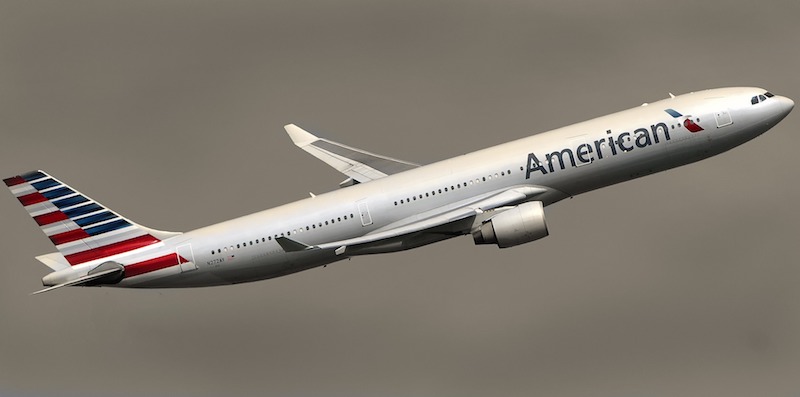
Former American Airlines executive, now United Airlines COO, Scott Kirby has publicly stated that Basic Economy is made intentionally to provide a poor customer experience to sell coach seats at a $15-25 premium. Why that doesn’t make sense to me is due to another widely circulated fact from Kirby (while still at American): An astonishing 87% of American Airlines customers fly just once per year and contribute only half the revenue to the airline. So, if almost 9 in 10 passengers on a plane are going to fly the carrier just once per year, why sell them a seat where they can’t buy the extras they didn’t realize they weren’t getting? You won’t see that customer for another 365 days and what are the chances they return to your carrier if you put them in a situation where they couldn’t even buy their way back to a mediocre experience?
It’s petty, it’s punitive, and it’s the worst it’s ever been.
Mileage Earning for Actually Flying
For most consumers, airline miles are a thing of the past. As preciously stated, American Airlines reports that 50% of their customers fly just once per year and considering the average distance of domestic flights, they probably come out about the same but it doesn’t feel that way. For the one big trip they take every few years (a trip to Europe, Hawaii, etc.) there is no mass influx of points as there once was. While the flights themselves are cheaper (better to have cash than miles anyway) it still doesn’t feel like the average traveler can really get anywhere on points.
Considering that most casual flyers will not have elite status, the points earned will net five points per dollar spent. If the average domestic award redemption costs 25,000 miles then the average fliers is going to spend $5000 on net airfare (not including taxes and government fees). At one flight a year, that’s ten years of flying instead of what used to take five.
While this is not new in 2018, more and more carriers completed a conversion into this style of earning or will be in the future (Lufthansa and Air France/KLM just announced revenue based frequent flyer mileage accrual). It’s also starting to set in for some flyers who maybe were not as plugged into the community as most of our readers are. It takes awhile to notice changes like this when you fly in a limited fashion.
For the power users, this hurts even more. For business travelers who fly coach long-haul tickets to Asia and Europe per their company’s travel policy, this has been terrible. Business travelers don’t necessarily control what they spend on tickets, it costs what it costs to travel and with lower overall fares, accrual is limited. With status requiring thousands and thousands of dollars spent in conjunction with miles flown it makes it even harder for the most loyal customers to qualify and less rewarding for the same commitment to the carrier they showed in the past. In fact, it’s my prediction that remaining elites will finally start to return to the first class cabin as upgrades solely because there are fewer of them that were able to re-qualify for status. While those that did re-qualify will see this as good news, explain that to the hundreds of thousands (if not millions) of elites that have fallen tiers or perhaps out of elite status altogether.
Basic Economy
Literally designed so that you will hate it, Basic Economy shouldn’t be called Basic Economy at all, it should be called Punishment Class because that’s its entire purpose. You can take on a purse, or a lightly packed backpack, but not a rollaboard nor a duffel bag, nor anything that would hold more than a day’s worth of clothing.
I get it. It’s a cheaper fare, but as has been pointed out in many other places, it’s not Spirit Air cheap and in some cases it’s more expensive than regular coach. At least with those carriers, however, if you booked it unwittingly or someone booked it for you – you can still buy the features you need. On United, American and Delta – sorry Charlie. How that makes sense for the 50% of passengers that fly just once a year? I don’t know. If you want to offer fares that compete with Spirit and Allegiant, I think that’s great and customers who are getting an absurdly inexpensive fare should get less for their money – that’s fair. But what’s the point of not driving the revenue once they realize they want those things? Why lock them into a fare without the ability to buy that carry-on space? It just seems counterintuitive, or perhaps punitive.
Economy
It’s more than the removal of meals in coach but that’s a good place to start. International flights still feature some catering from US carriers but the food has gotten worse in my humble opinion. I don’t have any empirical data to support my claim, but this is a blog, not the New York Times, I think it’s worse and I often skip it altogether. Even if you state that it’s not getting worse, I don’t hear anyone talking about how much better it is getting.
There’s less space than ever before. One could point to the discount carriers abroad like RyanAir that started this limited space mess, but regardless of the origin, economy fare customers on United Airlines (not premium economy… but whatever name you prefer) are getting the same terrible seat space you have everywhere else. When you start flirting with 28″ as a possibility (American was going to place 29″ in their back few rows but clawed back the effort) you’re playing with fire.
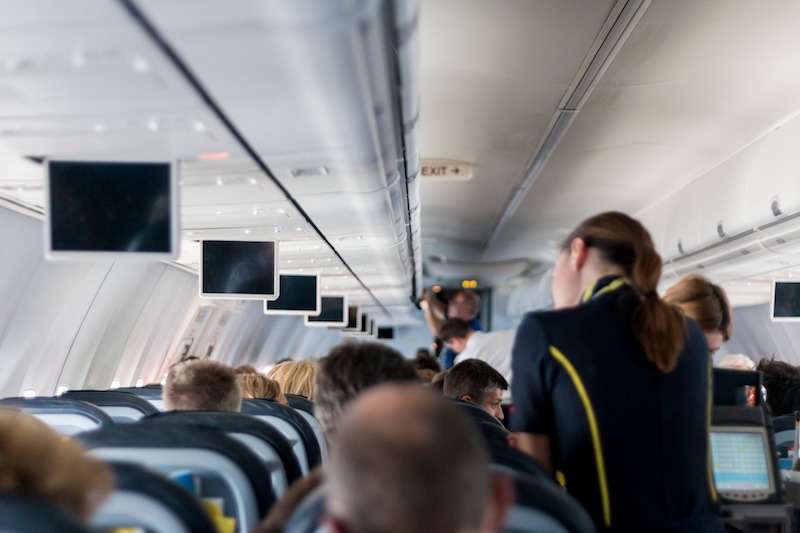
I understand why some of these items had to go away for regular economy seats. Looking back at the turbulent financial times that came with the dotcom bubble, then September 11th and generally more capacity than was necessary, airlines needed to reduce perks like meals in the back of the plane. However, even with less service and space for coach customers, the addition of Basic Economy has added a $15-25 premium for the same deficient product as last year.
Premium Economy
Have you looked up prices in Premium Economy lately? Ouch, check out those costs. Remember when you used to get that kind of seating and treatment included with the ticket? Now some will argue (correctly) that Premium Economy seats offer better benefits for about the same price as economy seats used to cost. That’s a fair point. But given the level of competition, the fuel savings – it’s downright criminal.
Premium Economy is not offered on every flight, but when it is offered, the airlines take advantage of unsuspecting coach passengers that have not shopped Business Class fares. Take a look at this post regarding how often Premium Economy is even more expensive than Business Class.
It’s an almost forgone conclusion that American Airlines, which will unilaterally place a Premium Economy on their international fleet, will create another cabin as Delta has. For changes of this nature, American and United seem to follow Delta blindly in a race to the bottom. It’s only a matter of time before American will only allow coveted eVIPs (systemwide upgrades) to move one class, meaning that top tier customers will have to purchase at least Premium Economy to secure a business class seat whereas now any coach seat will do. The installation of this new configuration in the fleet will take place mostly in 2018 with stragglers completed in 2019. While some may look at the expanded service offerings as an upgrade, it will be just the opposite for highly frequent flyers that used to get actual upgrades to business class as a perk of their continued loyalty to the brand.
Business Class
While international business class has generally improved with lower prices and better service, domestic business class by some airlines (formerly first class) is less available. Examine American Airlines as a proxy. By retiring the overly generous MD-80s flown on mostly domestic routes with 16 seats in first, replacement aircraft like the A320s the airline has acquired have just eight seats in the pointy end of the plane.
Making domestic business class seats even more difficult to secure is the fact that airlines like United and Delta have “optimized” the space and will sell upgrades to open seats on the day of travel for as little as $99. This is also not new for 2018, but when the carriers first started to do this, double the first class seats existed.
Consider the proposition for a moment. The airline would rather sell a $100 ticket in coach (assuming it’s a competitive route and not basic economy) and offer an upgrade at checkin to any passenger for $99 more. While that might make sense to the airline, it certainly doesn’t make sense to the weekly business traveler with Platinum status sitting in coach on a $400 ticket.
More and more international business class is going away as well. United and Delta are re-positioning some of their premium-equipped aircraft from short international routes (East Coast of the US to Western Europe) to competitive domestic trans-continental flights while high density configuration planes go to Europe to combat cheap competition from WOW! Air and Norwegian Air Shuttle. Not only that, but United appears to be in no rush to convert their high-density 777-200 fleet from 2-4-2 in business class to something with a little more space for customers.
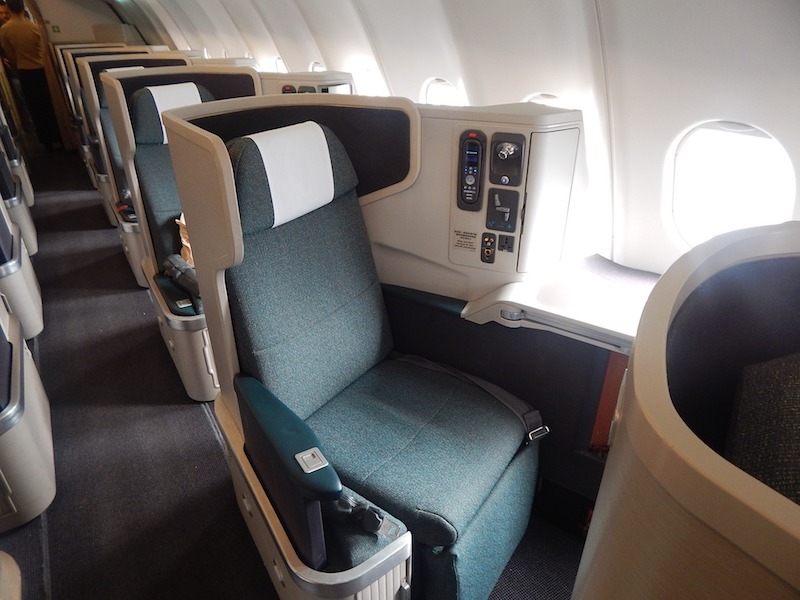
First Class
Remember first class? It’s going away if it’s not already gone. American Airlines continues to offer the class on just their 777-300ER aircraft mostly for compliance purposes with their JV partner, British Airways who require them to offer a comparable product for shared routes. Delta stopped selling first class years ago and doesn’t even offer the ability to book awards with partners who still offer First Class seats. United has replaced aircraft that offered the cabin like the 747 with aircraft that do not, the 787.
For those that want to pay $10,000+ for a first class ticket aren’t finding the true distinction from business class either. American will charge you even more than $10k for a first class on their aircraft on routes like London, Hong Kong, and Sao Paulo, but good luck finding any kind of justification for the extra money. Catering on these flights are almost identical to business class, the seat is marginally better (though Matthew doesn’t really care for it at all) and the first class lounge is often worse than the much busier, much bigger business class lounge (especially at Chicago O’Hare).
When you compare first class options from US-based carriers with that of Singapore, Etihad, or Emirates – it’s not a competition at all.
Fewer Choices
Domestically there are fewer options than there were a few years ago. Industry consolidation has narrowed the field by combining carriers: American with US Airways, America West, Delta with Northwest, Southwest and Air Tran, Alaska with Virgin America, United and Continental. While Spirit and Allegiant have grown and become a real force in smaller cities they don’t offer the domestic network nor the international connections of their listed peers.
Mileage programs from the major carriers have all but aligned with each other. Delta, American and United now all have four tiers and have formally added a fifth tier for particularly profitable customers – but they won’t tell you how to qualify for it. Want to earn more than 5 “miles” per dollar spent and are based in the US? You better have elite status and that earning is all the same as well. Not a single program offers any true distinction from the others. And they don’t have to. Alaska offers some distinction but does not have the comprehensive network or market coverage to make them a real alternative to Southwest, United, Delta and American.
Are you a Debbie Downer like me and also feel that it’s never been a worse time to fly than 2018 will be? Did I miss a contributing factor that will make this an even worse year than I have forecast?

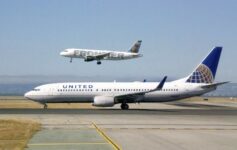
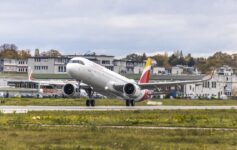

Kyle, while your anecdotes are entertaining, and social media enables rare occurrences to gain global notoriety, the facts are as follows: 2017 was the best-ever year for customer satisfaction for US air carriers. I know of no other study that is as highly respected and as high volume as the American Customer Satisfaction Index. Here is their data on airlines since 1995:
http://theacsi.org/index.php?option=com_content&view=article&id=149&catid=&Itemid=214&i=Airlines
Where is your data?
Maurice, thanks for your comment. It looks like you will be more interested in my upcoming counter to this post (It was the best of times…). I clicked on the study, and I will include a link in the post for others to review as well, however the study doesn’t indicate how the data was compiled. You can ask where my data is (I am surprised that in the year of Dao anyone could suggest that airline satisfaction is the highest since 1995) but I would suggest that this close to the end of 2017 data has not been sufficiently compiled to validate the claim that 2017 was the best year for customer satisfaction. It would be cherry-picking to suggest that just seven days into the new year that a competent data set had been completed to support that either customers are the happiest they have ever been or that it’s the least happy they have ever been. But also note, that this is about 2018 and how the upcoming year will be the worst based on experiences in 2017.
He doesn’t have to look at numbers/data…….everything he wrote about is exactly as is happening. Maybe the polls and surveys are being filled in mostly by the once-a-year fliers – they either NEVER have a good experience or are “ecstatic” that they are flying the Disney carrier – Southwest – brainwashed fliers who think they are getting a bargain when they definitely are not (Southwest’s fares are some of the highest I’ve seen and they treat their passengers like 5-year olds in more ways than one). The information is totally spot-on.
JoEllen, thanks for the support, I am curious how you view the next post in this two-part series (The best of times) coming out shortly.
Great article! I particularly like “punishment class.” I can think of some other names as well! lol
Thanks Kitten.
Kyle, the ACSI will have completed its 2017 data publication around March, or perhaps early April. Their methodology is described under the About ACSI heading, though not in great detail. ACSI just has the largest amount of public information. Other benchmark systems, such as the Temkin Experience Ratings, confirm similar trends for airlines. As you say, 2018 may be different.
While I retired last year, I was at the top tier in the Swiss/Lufthansa system (HON Circle, equivalent to United Global Services), BA Gold, and AF/KLM Platinum, so am interested in the subject. I retired from HP as VP of Customer Experience, and am specifically interested in customer experience articles, so thanks for yours.
Thanks for expounding on the source of the data. I would have to say that any data published prior to the Dr. Dao incident that also includes United would have to have a giant asterisk but I will look forward to their 2018 numbers compiled in just a few months. I have included your link in my next post set to go live just before 1PM Eastern. I also support other claims using data and tables as inspired by your comment. I don’t have a problem supporting my claims, though as this blog is meant to be informal, I don’t necessarily site all sources to support my opinion. I classified this post as “Editorial”.
It’s been a while since I worked on customer experience, but IIRC, value was the single biggest driver. Cheap flights increase satisfaction, and if you get from A to B on time, you’re happy, especially if you just expect a poor transit experience going in. Airlines have done well at managing down expectations. This doesn’t mean that airline service isn’t categorically poorer, it just means expectations have been set low so satisfaction is high, ACSI is very much subjective perception.
Statistically, the ACSI will be driven by economy passengers, so it will be interesting to see if basic economy and spirit have tempered satisfaction.
I think that’s a fair point. My satisfaction at a recent stay at a Waldorf-Astoria property was 7/10 but points were deducted because I expected perfection at a property like that. Any time a brand like that falls short of expectations, it seems like an egregious error (especially the more correctable the error is because it feels like you’re paying for effort). On a recent Spirit flight I arrived on time, it was direct, the space wasn’t great but the crew was cheerful. I was happy – 8/10 even though the seat was uncomfortable, the rest of the process was painless and really delivered on what I expected.